El Niño Safe Driving Tips | Auto Insurance Comparison
Safe Driving Tips for 2015 El Niño
This year’s predicted strong El Niño season is both good and bad news. If you live in Florida, the East Coast, or the Gulf of Mexico, the strong El Niño means there will be fewer and weaker hurricanes. That’s the good news. Now for the bad news. If you live on the Pacific Coast, it means that the wet season will be worse and more dangerous than usual.
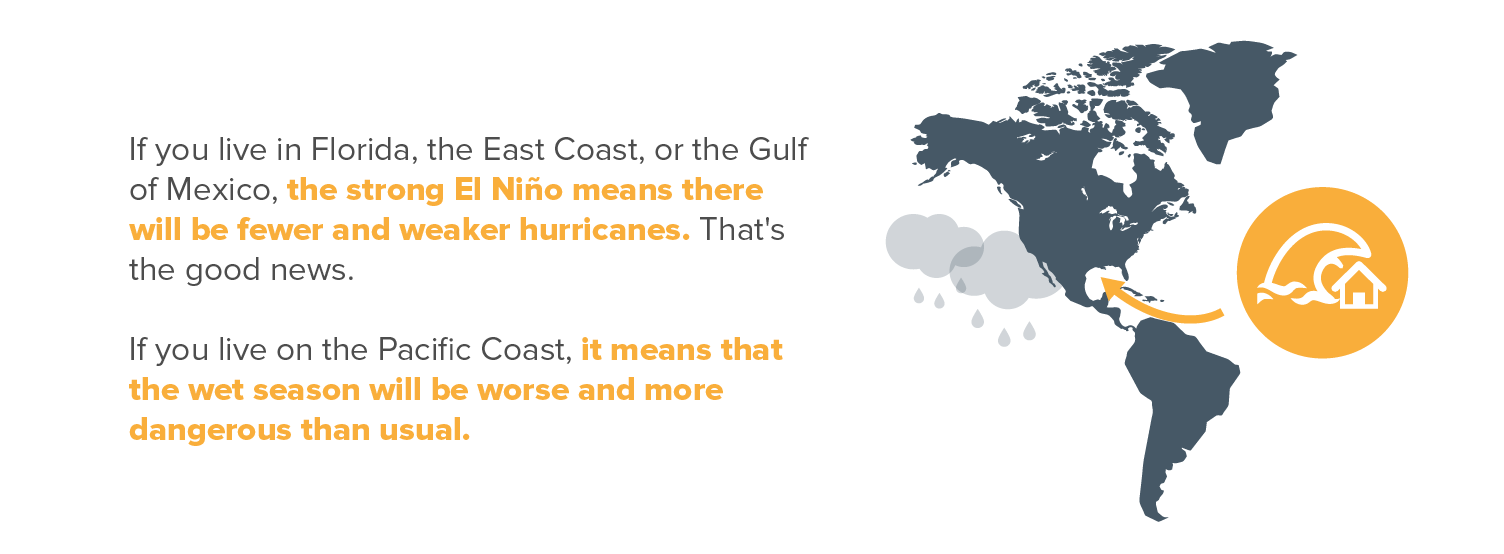
The last El Niño of similar strength — from December 26 through January 3, 1997 — brought over 20 inches of snow and rain in some locations in California. This can cause flooding, mudslides and agricultural disruption — and billions of dollars in losses. On a national level, there are 5,879,000 vehicle crashes each year, according to the U.S. Department of Transportation. Twenty-three percent of these accidents are weather-related. Rain and wet pavement accidents account for more than 80% of weather-related injuries, killing an average of 4,789 people a year nation wide. This is the highest of all the weather-related injuries, more than sleet, snow, ice and fog combined.
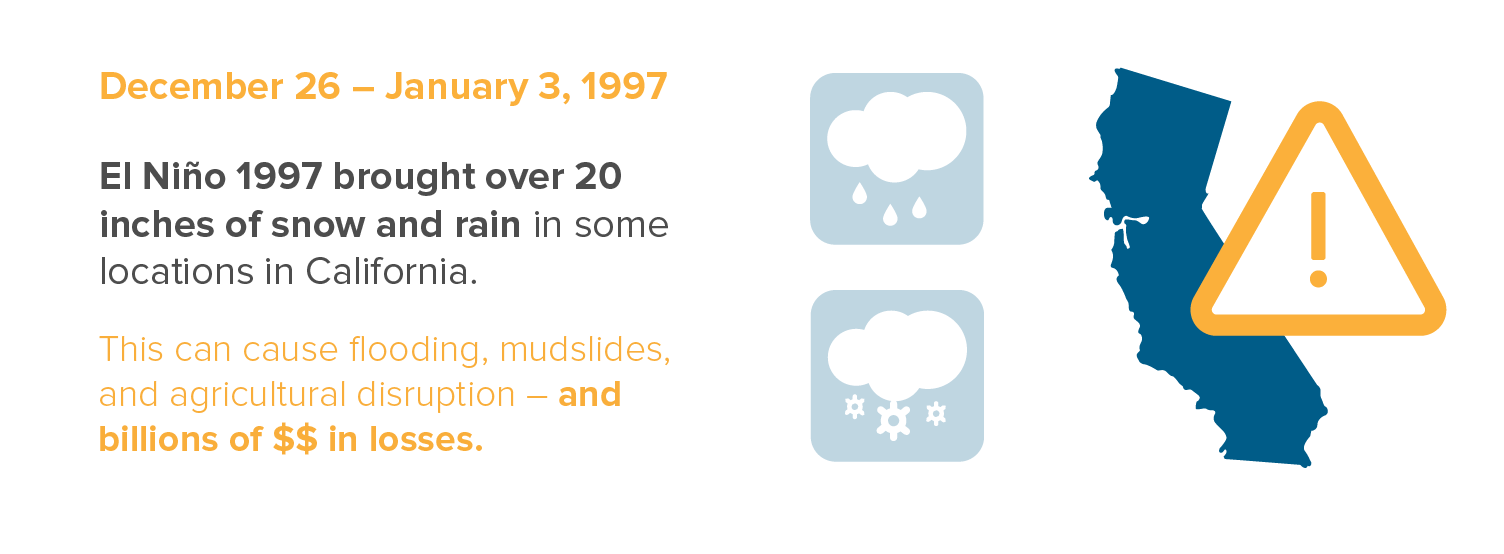
To avoid any accidents and to keep your family safe during the wet season, keep some smart, road safety tips in mind when you are out and about in the heavy seasonal rains, especially since the rains can produce limited visibility and local flooding faster than you can say “El Niño.” First and foremost, make sure you are insured. You can check for a quick auto insurance comparison online.
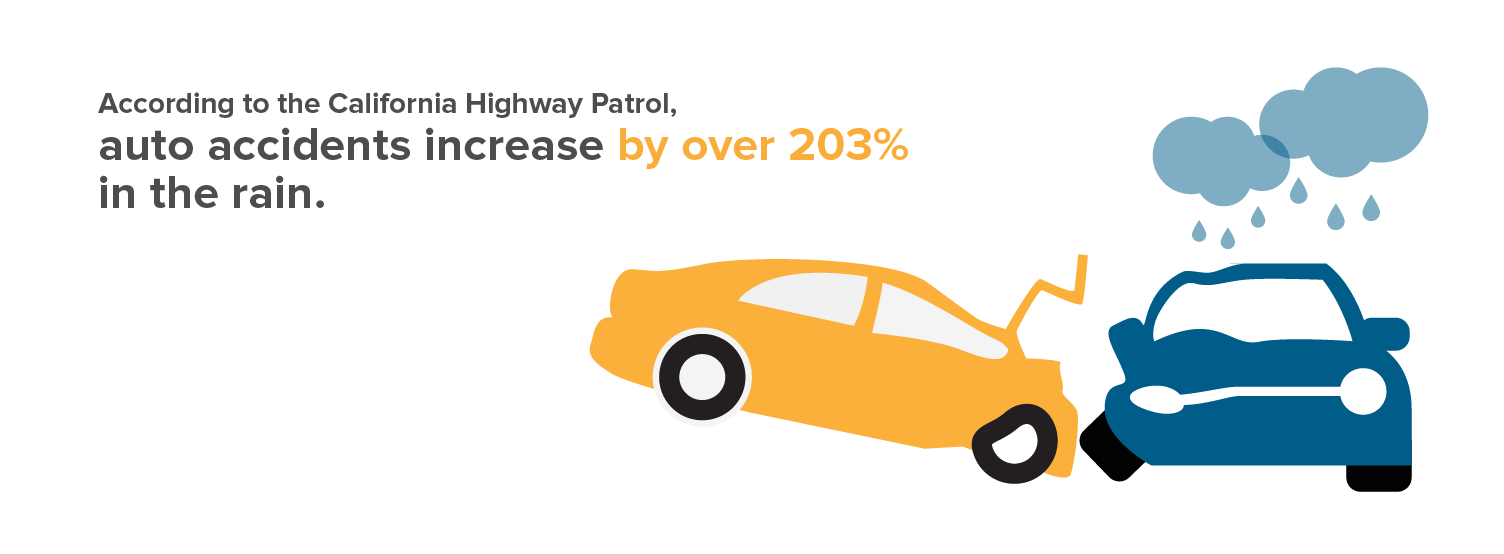
Pay Attention to Wet and Potentially Flooding Roads
You should heed the warning signs around you and try not to drive at all when the roads are soaked and possibly flooded from El Niño conditions. When you drive through pools of standing water you are in the greatest danger, as you can never truly know if the water is too deep for your vehicle until it is too late.
If you do find that your vehicle has quit running when you are stuck in standing water, the worst possible thing that you can do is to attempt to start it back up again. Starting your automobile again while you are in standing water only forces additional water into the engine compartment. This might then cost you thousands of dollars to fix.
Driving and Safety Tips for the Wet Roads
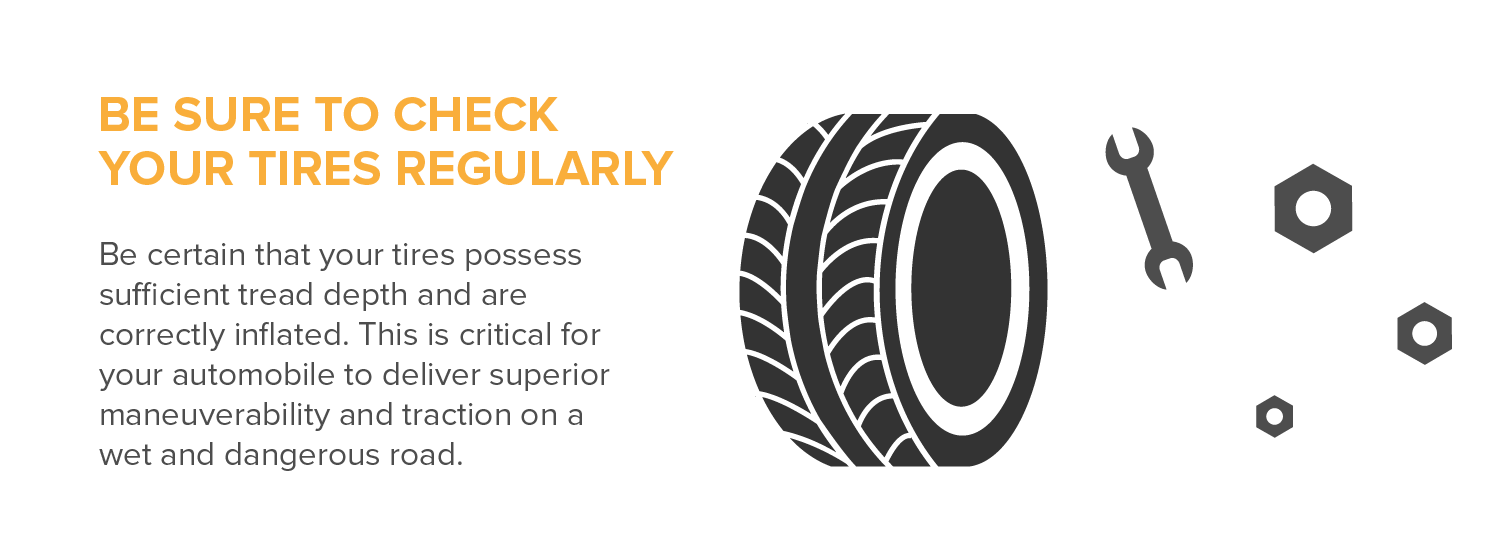
1. Be Sure to Check Your Tires Regularly
Be certain that your tires possess sufficient tread depth and are correctly inflated. This is critical for your automobile to deliver superior maneuverability and traction on a wet and dangerous road. Tires that are too well worn and demonstrate too thin a tread naturally have a better chance of hydroplaning on the wet and slick surface. If this occurs, then you will lose steering and braking control.
The old standard trick to double check tread still works. Simply take a quarter and stick it upside down directly into the grooves on your tires. If at any place on the tire treads you are able to see the space over George Washington’s head, then you need to invest in a new set of tires.
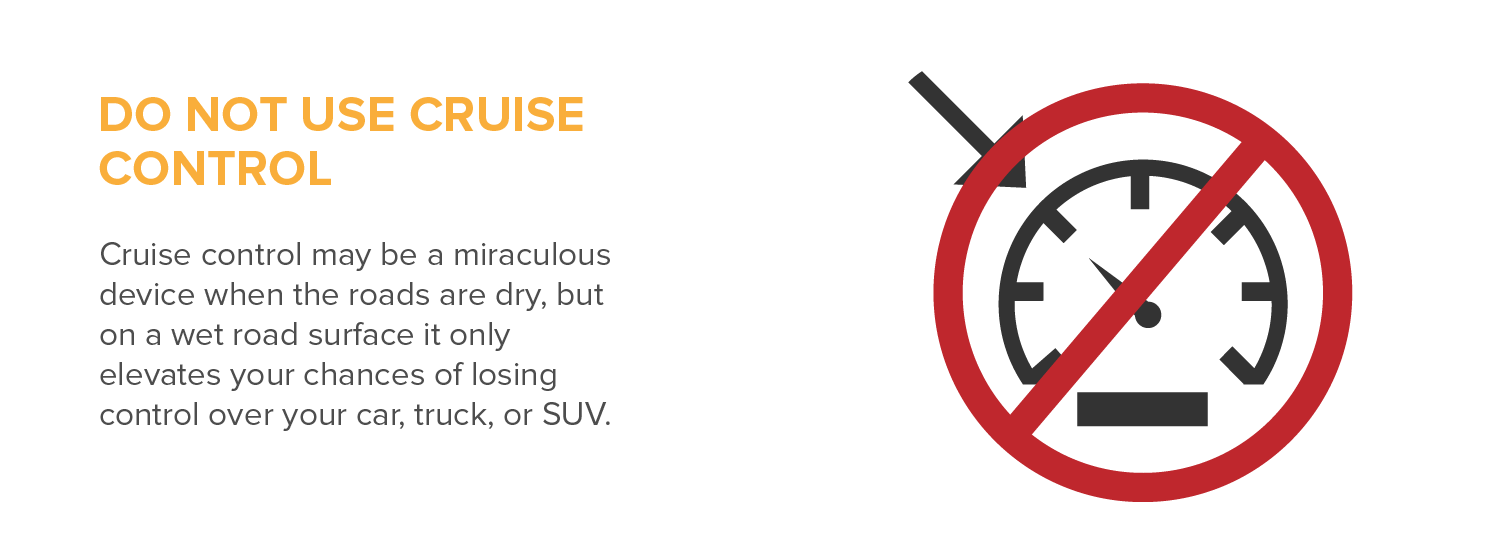
2. Do Not Use Cruise Control
Cruise control may be a miraculous device when the roads are dry, but on a wet road surface it only elevates your chances of losing control over your car, truck, or SUV. Never use cruise control when it is raining. As you approach pools of water, take your foot off the accelerator to keep your vehicle from losing traction. Don’t slam on your brakes! If you need to use your brakes to slow down quicker, do so but slowly.
3. Turn Your Headlights On
This may sound obvious, but many drivers forget that rainy conditions on the roads often create low visibility situations. With your own headlights engaged, you can not only see others better, but they can see you better as well. Try not to resort to the high beams as they not only blind other drivers, but the additional light can reflect against the rain and distract you still more.
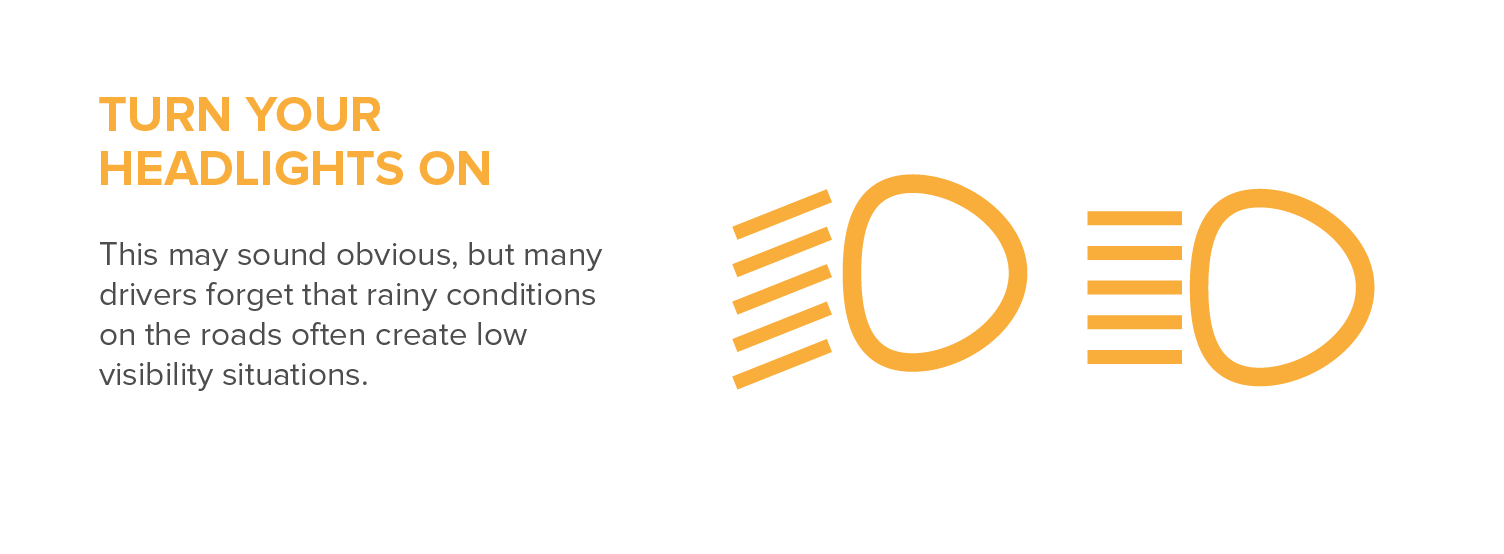
4. Be Proactive About Poor Visibility
Though it goes without saying that your parents were right when they warned you about pulling off the road to a safe distance when you can no longer see the cars in front of or behind you, many people ignore this golden rule of poor visibility. If you are unable to see the road’s edges or any other automobiles at a reasonable distance in the wet weather, then be sure to pull off of the road to a safe distance and wait out the downpour. Arrive alive is still practical advice.
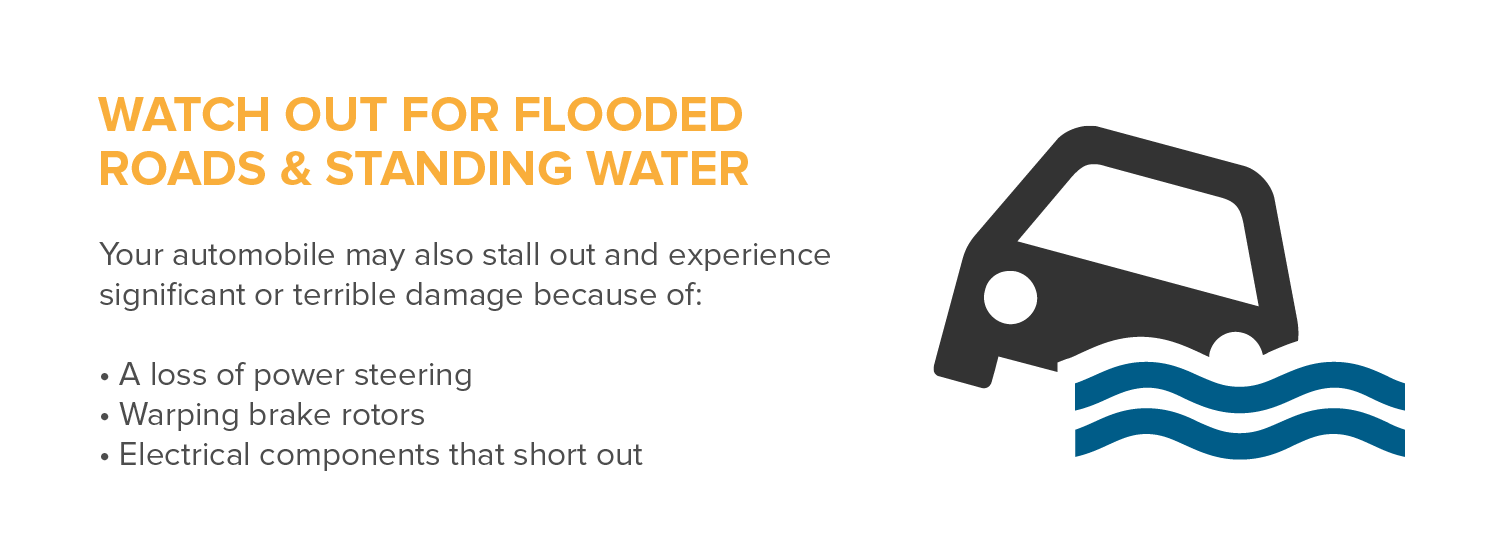
5. Watch Out for Flooded Roads and Standing Water Always
It is not only the engine that is in danger in road flooding and deep standing water. Your automobile may also stall out and experience significant or terrible damage because of:
• A loss of power steering
• Warping brake rotors
• Electrical components that short out
In the event that your automobile stalls in a flood, never stay with your car. Get to higher ground without the vehicle as soon as you can. When flood waters rise, they do so rapidly, and this can cause the car and everyone in it to be swept completely away.
El Niño will have a different effect on different areas. The areas with the highest risk of flooding and mudslides will be coastal cities, especially those in the southwest U.S. as they are anticipated to receive both warm temperatures and heavy precipitation. It’s already begun in some areas, and Californians have noticed the changes in the water. Though surfers may be loving the unusually warm water, this indicates the start of the El Niño season. Experts also say there is an 80 percent chance that the “weather anomaly” will last through Spring 2016.
